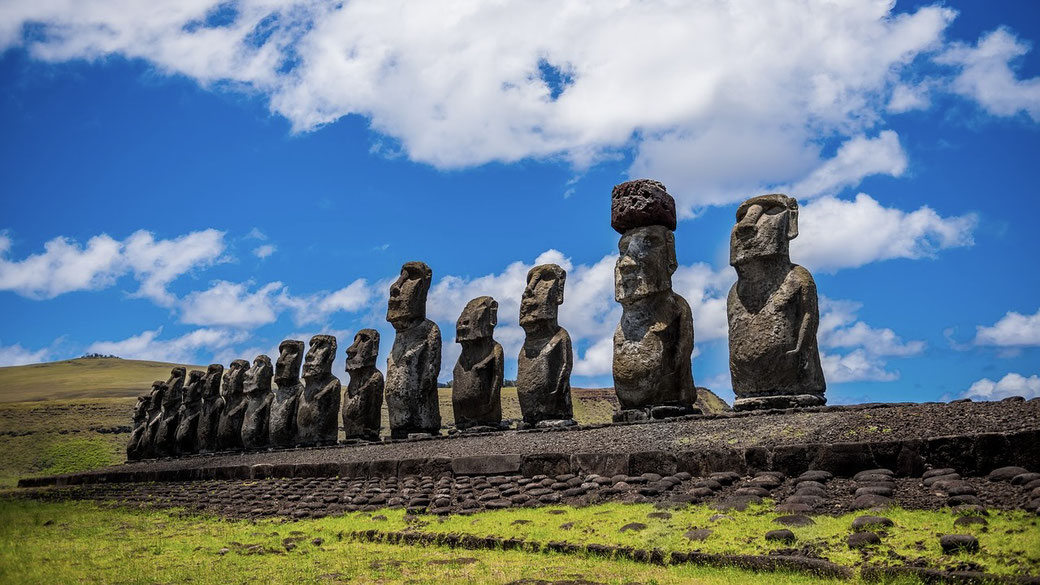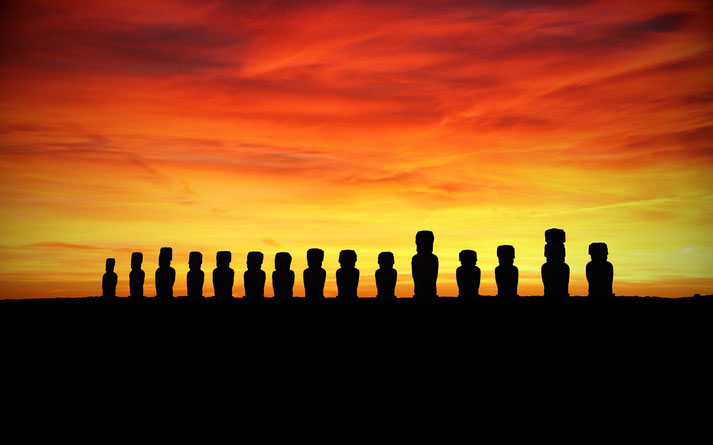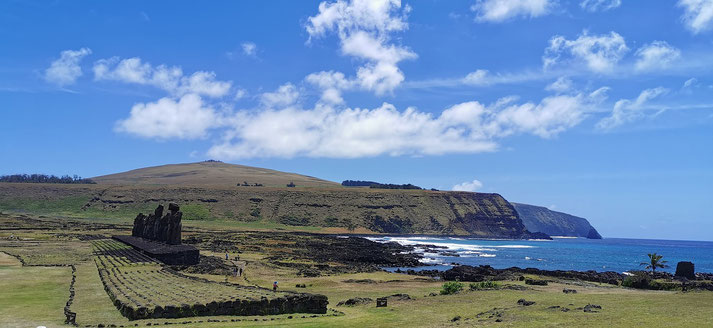The incredible, yet tragic, history of Easter Island

Nestled and isolated in the vast expanse of the Pacific Ocean, Easter Island has become famous around the world, primarily for its mysterious stone faces.
These silent moai statues tower over the island's rugged terrain. But why are they there? Answering this question has captivated the imagination of travelers and scholars for centuries.
But for those who look beyond these iconic stone figures, they discover a complex history.
What is Easter Island?
Easter Island, which is also known by the name Rapa Nui, is a remote island located in the southeastern Pacific Ocean.
For most of human history, it was uninhabited. This is primarily due to the sheer distance one had to cover in order to reach it.
It required humans to first develop safe ways of travelling across open ocean before travellers could even find the tiny land mass.
The first people to arrive on Easter Island were Polynesians, who arrived around 800 AD.
These earliest settlers were clearly skilled navigators who had finally worked out how to travel across vast expanses of ocean to reach the island.
Once there, they built a thriving society based on agriculture and fishing.
How did the Polynesians reach Easter Island?
It is thought that the Polynesians who settled Easter Island were part of a larger group of seafaring people who migrated across the Pacific Ocean.
One theory suggests that the Polynesians may have used a system of star navigation to guide their canoes across the ocean.
By using the positions of the stars, they could determine their location and course, even on cloudy or overcast nights.
Another theory suggests that the Polynesians may have used natural signs, such as the movement of ocean currents and the behavior of seabirds, to guide their navigation.
Whatever methods they used, the Polynesians who reached Easter Island would have faced a long and perilous journey across the open sea.
They likely traveled in large, double-hulled canoes, which were capable of carrying large numbers of people, along with supplies and provisions for the journey.
Once they arrived on the island, the Polynesians would have faced significant challenges in adapting to their new environment.
Despite its lush vegetation and abundant wildlife, Easter Island is a remote and isolated place, with limited resources and a challenging terrain.

How were the Moai built?
The moai are perhaps the most iconic feature of Easter Island. These giant statues, which can be as tall as 33 feet and weigh as much as 75 tons, were carved from volcanic rock by the island's inhabitants.
The reasons for the creation of the moai are not entirely clear. It is believed that they served as representations of ancestors or important figures in the community.
The moai were typically carved with elongated heads and prominent brows, and many of them were adorned with headdresses or topknots made from red scoria, a type of volcanic rock.
The creation of the moai was a highly specialized and labor-intensive process that involved the entire community.
The first step in creating a moai was to select a suitable piece of volcanic tuff from the quarry.
Once the block had been chosen, the sculptors would begin to carve away the excess stone, working from the top down.
They would use stone chisels and hammers to shape the stone into the desired form, carefully removing small chips of rock until the statue was complete.
Once the moai was finished, it would be transported to its final location using a system of ropes, levers, and rollers.
The statues were placed on large platforms called ahu, which were often located near the coast and facing inland.
How did a people, without wheels and pack animals, transport the moai? Even today, the answer to this question is entirely clear.
The best guess is that the island's inhabitants used a combination of human labor and wooden sledges to move the statues across the island.

Arrival of the Europeans
Easter Island was discovered by Europeans on April 5, 1722, when the Dutch explorer Jacob Roggeveen arrived on the island during a voyage to find Terra Australis, a hypothetical southern continent.
Roggeveen and his crew were the first Europeans to make contact with the inhabitants of Easter Island, who were Polynesians.
He was the one who named the island "Easter Island" because he arrived on Easter Sunday, which fell on April 5th in 1722.
The Europeans who followed Roggeveen to Easter Island included Spanish, British, and French explorers and traders.
Sadly, these visitors brought with them new diseases that the island's inhabitants had no immunity to.
The Europeans also exploited the island's resources, including timber and food, which had already been severely depleted by the island's earlier inhabitants.
Despite these early interactions with Europeans, Easter Island remained relatively isolated and unknown to the rest of the world for many years.
It was not until the late 19th century that the island began to receive more regular visitors, including archaeologists, anthropologists, and tourists.
Rapid population decline
Before the arrival of Europeans in the 18th century, the population of the island is estimated to have been between 2,000 and 3,000 people.
However, by the late 19th century, the population had declined to just a few hundred.
In addition to the impacts of European arrival, the islanders themselves were also responsible for some of the population decline.
As the island's population grew, the demand for resources increased, and the islanders began to overexploit the island's natural resources, including its forests and agricultural land.
This led to soil erosion, deforestation, and a decline in crop yields, which in turn led to famine and social unrest.

Today, the population of Easter Island is around 8,000 people, with most of the island's residents living in the main town of Hanga Roa.
While the island has seen some economic development in recent years, it remains one of the most isolated and economically challenged places in the world.
The island's fragile ecosystem and unique cultural heritage continue to be threatened by a range of challenges, including overfishing, climate change, and tourism pressures.
Cautionary tale for the modern world
Today, the moai and other artifacts of the island's past continue to draw tourists from around the world.
The island's inhabitants have also made efforts to preserve and protect the island's environment, including reforestation projects and the establishment of protected areas.
Despite these efforts, the legacy of Easter Island serves as a cautionary tale about the consequences of environmental degradation and social conflict.
What do you need help with?
Download ready-to-use digital learning resources
Copyright © History Skills 2014-2024.
Contact via email
With the exception of links to external sites, some historical sources and extracts from specific publications, all content on this website is copyrighted by History Skills. This content may not be copied, republished or redistributed without written permission from the website creator. Please use the Contact page to obtain relevant permission.





